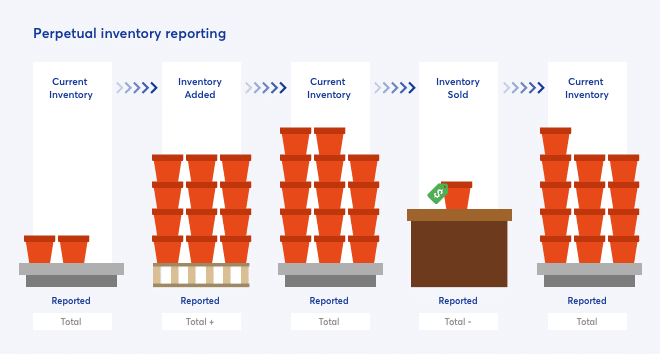Inventory Management Things To Know Before You Get This
Wiki Article
Not known Details About Inventory Management
Table of ContentsInventory Management Things To Know Before You Get ThisSome Ideas on Inventory Management You Need To KnowThe Only Guide to Inventory ManagementSome Ideas on Inventory Management You Should Know
There are 2 primary techniques of monitoring stock: routine and continuous. The main distinction in between these is exactly how often information is upgraded. No matter of how typically you track supply, you might intend to use one of the adhering to supply monitoring methods: ABC Evaluation, ABC (Always Better Control) Analysis is inventory management that divides various things right into three groups based upon rates as well as is divided right into teams A, B, or C.EOQ Version, Economic Order Amount is a strategy used for preparation and purchasing an order quantity. It includes making a decision relating to the quantity of supply that should be positioned in stock at any kind of given time.
FSN Technique, This method of supply control describes the procedure of keeping an eye on all the items of inventory that are not used frequently or are not needed at all times. They are then categorized right into three different groups: fast-moving inventory, slow-moving supply, and also non-moving supply. JIT Technique, Simply In Time supply control is a procedure utilized by suppliers to manage their supply degrees.

The Only Guide to Inventory Management
VED Analysis, VED is a strategy utilized by organizations to control their supply. The high level of stock that is needed for production typically justifies the reduced stock for those parts.Wrike is a task administration solution that can help you do specifically that. With Wrike's product management devices, you can manage every one of your item team's tasks in one place as well as get one of the most out of every job. Wrike's product launch automation aids accelerate product launches with a streamlined method.


Supply monitoring tries to successfully simplify inventories to prevent both excess and go to this web-site shortages. Four major inventory monitoring techniques consist of just-in-time management (JIT), products requirement preparation (MRP), economic order amount (EOQ), as well as days sales of inventory (DSI).
A shortage of supply when and also where More Bonuses it's required can be very detrimental. At the same time, stock can be believed of as an obligation (if not in an accountancy feeling).
Understanding when to restock inventory, what total up to purchase or generate, what rate to payas well as when to offer and at what pricecan easily become facility choices. Small businesses will certainly frequently track stock manually as well as figure out the reorder factors and quantities making use of spread sheet (Excel) formulas. Larger companies will make use of customized business resource preparation (ERP) software.
The Of Inventory Management
Proper inventory administration strategies vary depending on the sector. An oil depot is able to store big amounts of supply for extensive time periods, enabling it to await demand to get. While storing oil is costly and also riskya fire in the U.K. in 2005 led to countless extra pounds in damages as well as finesthere is no danger that the supply will certainly spoil or go out of style.For business with intricate supply chains and manufacturing procedures, balancing the dangers of supply excess and also scarcities is particularly hard. To achieve these balances, firms have created numerous approaches for supply monitoring, consisting of just-in-time (JIT) and materials requirement planning (MRP). Some companies, such as monetary solutions companies, do not have physical stock and also so has to rely upon solution procedure monitoring.
Supply needs to be physically counted or measured Continued before it can be put on a balance sheet. Firms typically maintain sophisticated inventory monitoring systems efficient in tracking real-time supply levels. Supply is made up making use of among three methods: first-in-first-out (FIFO) costing; last-in-first-out (LIFO) setting you back; or weighted-average setting you back. A stock account normally is composed of four separate groups: Resources represent different materials a firm acquisitions for its production process.
Work in procedure (likewise called goods-in-process) represents raw products in the procedure of being transformed right into an ended up product. Ended up products are finished products conveniently available offer for sale to a business's clients. Product stands for ended up products a company purchases from a vendor for future resale. Depending on the sort of business or item being analyzed, a business will certainly use numerous stock monitoring techniques.
Report this wiki page